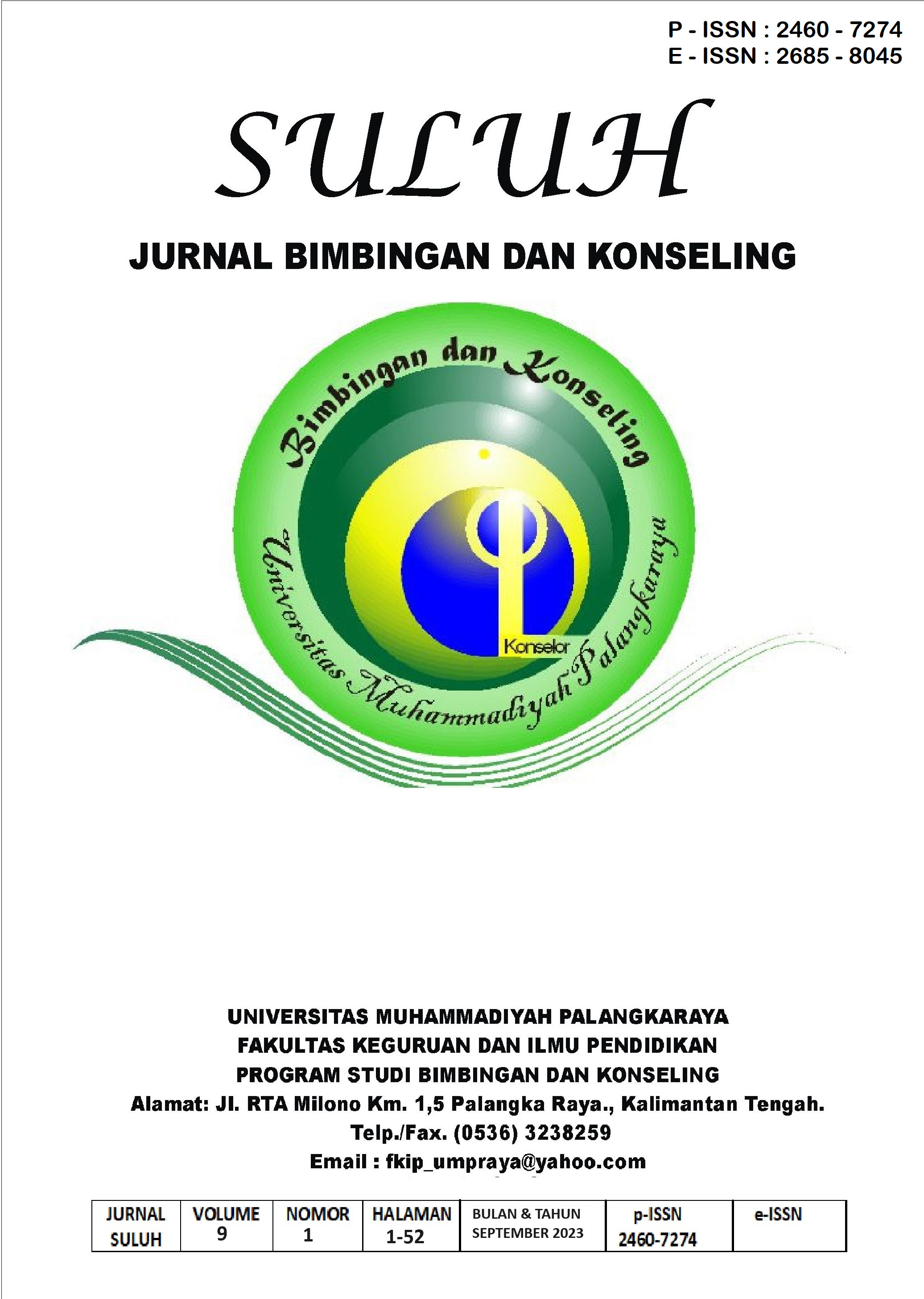Development of a Manual Book Problem Tracking Model to Identify Student Learning Motivation
Main Article Content
Abstract
Adolescence is a transitional period of development and growth faced by children aged 15/16 years due to various physical, social, and emotional changes, all of which will cause anxiety and discomfort. This period is also known as a period full of storms and pressure because teenagers must learn to adapt and accept all the changes that often cause emotional upheaval. If the activities carried out by adolescents with their peers are inadequate to meet the demands of their energy fluctuations, adolescents often release their excess energy in a negative direction. This activity can happen because the environment is often not following inner desires or expectations, so a person feels disappointed due to an imbalance between expectations and reality. Therefore, individuals in their teenage years, especially early adolescents, need adjustments to these changes in tasks and roles so that adolescents feel that the environment accepts them and can adapt well to situations of environmental expectations. As a Guidance and counseling teacher, you have to properly guide early youth so that they have a directed future. So, the purpose of this study is: 1) to know the various behaviors of early adolescents. 2) knowing the factors behind early adolescent behavior. 3) to know the counseling teacher's role in guiding early adolescents' behavior. In this qualitative research method, all existing data were analyzed using interviews, observation, and documentation.
Downloads
Article Details

This work is licensed under a Creative Commons Attribution-ShareAlike 4.0 International License.
All rights reserved. This publication may be reproduced, stored in a retrieval system, or transmitted in any form or by any means, electronic, mechanical, photocopying, recording.
References
Asosiasi Bimbingan dan Konseling Indonesia. (2006). Naskah Akademik Penataan Pendidikan Profesional Konselor dan Layanan Bimbingan dan Konseling dalam Jalur Pendidikan Formal. Bandung: ABKIN.
Aisyah, Indah Nur dan Romiaty. (2021). Konseling Kelompok Dengan Tehnik Scalling Untuk Mengatasi Masalah Motivasi Belajar Siswa. Syams: Jurnal Studi Keislaman.Vol 2 No. 2.
Fatchurahman, M., Setiawan, M. A., & Karyanti, K. (2023). Intervention group logotherapy and performance measures for reducing phubbing in Generation Z. Estudos de Psicologia (Campinas), 40, e200244.
Gagne R.M., Brings L.J & Wager W. (1992). Principles of Introduction Design 4th Edition. Fort Worth: Harcourt Brace Jonavoich
Herington A Janice., McKenney, Susan., Reeves C Thomas & Oliver, Ron. (2007). Desain Berbasis Penelitian: Panduan Untuk Menyiapkan Proposal Disertasi. Dalam C. Montgomerie & J.Seale (Eds), Prosiding EdMedia 2007: Konferensi Dunia Tentang Pendidikan Multimedia, Hypermedia & Telekomunikasi (pp 4089-4097). Chesapeake, VA: AACE. Arsip Fakultas Pendidikan Universitas Wollongong Australia.
Mohyi, Ahmad. (1996). Teori dan Perilaku Organisasi. Surabaya: UMM Press Rajasa.
Prawira, Purwaatmaja. (2012). Psikologi Pendidikan dalam Persfektif Baru. Yogyakarta: Ar Russ Media.
Rahmasari, Diana. (2006). Psikologi Perkembangan Anak dan Remaja. Surabaya: UNESA.
Reeves T. C. (2006). Design research from a technology perspective. In J. Van den Akker, K.Gravemeijer, S. Mc Kenney & N Nieveen (eds). Education design research. London: Routledge.
Reeves T.C., Herington.J., Oliver, R., (2004) A Development Research Agenda For Online Collaborative Learning. Educational Technology Research & Development. Diakses dari http://musgrave.cqu.edu.au/clp/clpsite/index.htm.
Sardiman , A.M. (2008). Interaksi dan Motivasi Belajar Mengajar. Raja Grafindo Persada: Jakarta.
Slayin, Robert. (2009). Psikologi Pendidikan Teori dan Praktek Jilid 2, Jakarta: Indeks.
Sudirman. (2010). Interaksi dan Motivasi Belajar-Mengajar. Jakarta: Raja Grafindo Persada.
Sudjana, Nana. (2009). Cara Belajar Siswa Aktif Dalam Proses Belajar Mengajar. Bandung.
Triyanto, Agus. (2012). Model Lacak Masalah Untuk Mengidentifikasi Permasalahan Siswa Di Sekolah. Jurnal Paradigma No.14 Th VII.
Yamin, Martinis. (2010). Kiat Membelajarkan Siswa. Jakarta: Gaung Press.

